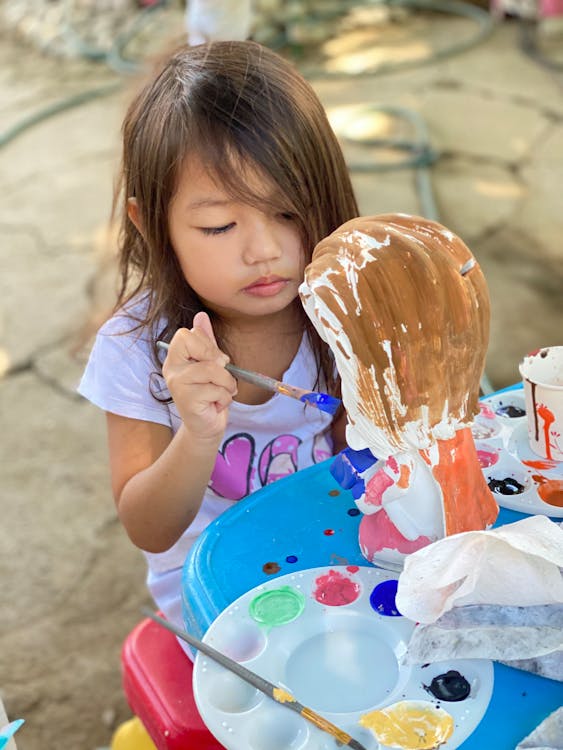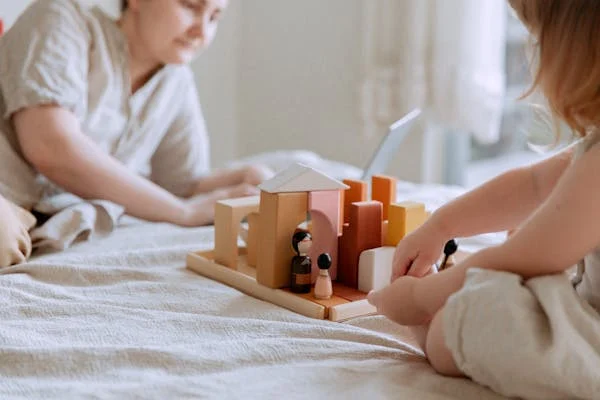What is play?
Play is frequently described as an activity carried out for its own sake. It is distinguished by means rather than ends (the process is more significant than any destination or aim), flexibility (items are combined in novel ways or roles are performed in inventive ways), and positive affect (children frequently laugh, smile, and express enjoyment from it).
Youngsters enjoy playing because it’s enjoyable, but it’s also essential for their healthy growth. Children practice important social, cognitive, physical, and emotional abilities while engaging in various forms of play.1.
Children learn problem-solving, cause and effect, creative thinking, communication, and proprioception (awareness of the body in space) through play activities like rolling a ball or dressing up. Additionally, they promote the growth of both gross and fine motor abilities. Play has progressive benefits, which means that your child’s abilities will develop into more advanced ones.
According to Lauren Starnes, EdD, chief academic officer of The Goddard School and a specialist in child development, “play is how young children make sense of the world.” “Young children reenact social situations and adopt different roles and perspectives through play.” Children may mimic their parents’ actions and feelings, for instance, in order to better grasp society (don’t be shocked if they act like they’re preparing supper or arguing about chores!). Having a stronger sense of self is another benefit of these learning.
The Different Stages of Play
As they get older, kids will engage in a wide variety of play activities. This encompasses the six phases of play—unoccupied, lonely, observer, parallel, associative, and cooperative—that were delineated by sociologist Mildred Parten in 1932.
Children go through these six stages before they are five, according to Parten’s research. After kids become proficient in them, they will experiment with various forms of play that fit into those categories, such as dramatic play, competitive play, and more.
Children’s physical and cognitive development can be observed as they move through the phases of play, according to Dr. Starnes. They continue to be challenged while gaining knowledge and confidence, which shows that their cognitive processes have changed.
Every child grows at their own rate, so they may participate in these different types of play sooner or later. Even though the stages of play are sequential, they frequently happen at the same time. When a youngster transitions from one form of play to another, they might not stop.

Unoccupied Play
Infants between the ages of one and three months will engage in idle play. Consider it their first attempt at learning about the outside world. Out of curiosity, they will survey their surroundings and wiggle their bodies erratically. Even though unoccupied play doesn’t seem like play, it lays the groundwork for later growth.
Independent Play / Solitary Play
Children don’t pay much attention to playmates in social situations from birth until they are about two years old. They would want to play independently to pass the time. Children who play alone acquire knowledge about their environment, develop self-assurance and self-reliance, exercise their imagination, understand cause and consequence, and hone their motor abilities.
Symbolic Play
Toddlers may begin experimenting with symbolic play, or using one object to symbolize another, at the age of 18 months. For example, they might pose as an apple or use a marker as a phone. Additionally, they might begin to play pretend in one or two basic ways, such as stirring a pot in a pretend kitchen or sipping from a teacup.

Onlooker Play
Toddlers start playing as observers when they are two years old. This is seeing other people play without getting involved yourself. Experts claim that while parents may be quick to downplay the advantages of spectator play, it actually gives kids the confidence they need to join part on the fun. They’ll pick up social skills and playfulness.
Parallel Play
Ever notice a bunch of toddlers playing next to one other but not together? They are acting out a parallel game. Although they may mimic one another and use the same toys, they won’t play with their classmates in person. Between the ages of two and three, parallel play is typical. It suggests that they are moving toward social engagement and are nearly (but not quite) ready to connect with others.
Associative Play
Children start to show increased interest in other people’s actions around the ages of three or four. While playing, they’ll start interacting with their peers, although they’ll still remain primarily independent. Children may, for instance, draw on the same piece of paper without remarking on each other’s creations. Alternatively, kids might play dress-up while switching clothing. Associative play has little organization because children won’t be working toward a common objective. Play like this improves language, cooperation, social skills, problem-solving, and conflict resolution.
Cooperative Play
This is the moment when kids begin to play with other people! Cooperative play begins for kids when they are 4 or 5 years old. It allows kids to hone abilities like sharing, cooperation, and verbal communication that they have acquired during other phases of play. They will also pick up new abilities like empathy, compromise, and kindness. Playing cooperative games, such building a block tower or duck-duck-goose, helps kids work together toward a common objective. Development of the social and emotional domains depends on it.
Dramatic or Fantasy Play
The main emphasis of dramatic play is your child’s most powerful tool—their imagination. This includes any kind of imaginative play, such dressing up, playing house, or pretending to be a restaurant employee
Competitive Activities
Competitive play, as the name implies, entails structured activities with winners and rules. Sports and board games for the family are two examples. Through competitive play, kids not only learn about cooperation but also about taking turns, according to rules, and handling failure—all crucial life skills for navigating the social world.
Physical Play
Playing Physically
Body movement occurs during physical play, though not always in a competitive environment. Playing tag, flinging a frisbee, dancing to tunes, and riding scooters are a few instances. Children’s fine and gross motor abilities can be developed through physical play. In addition, it supports the development of muscles, balance, and hand-eye coordination.
Positive Play
Constructive play allows kids to use materials in an orderly manner and make things—think Lego construction or sandcastle building. To make sense of the world around them, they are depending on their thoughts. Play that is constructive imparts lessons in perseverance, organization, imagination, and reason. Additionally, children are exposed to mathematics and scientific ideas in the actual world, which frequently piques their innate curiosity.
